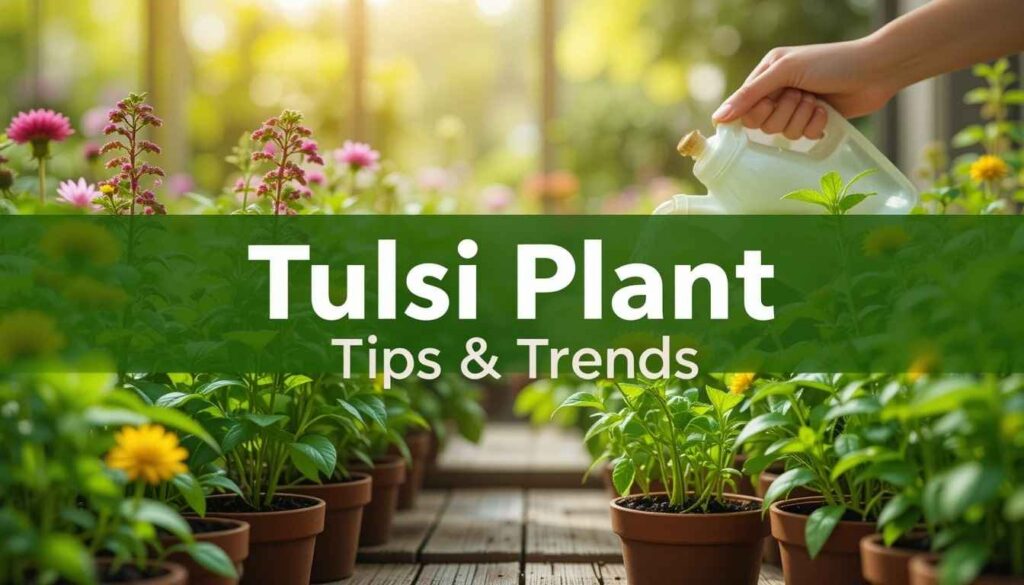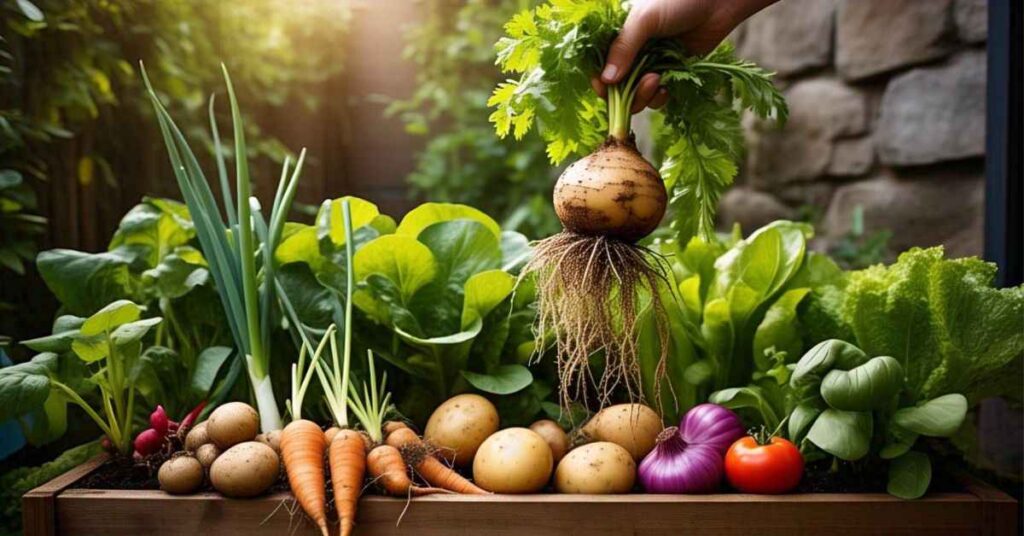Growing tomatoes from seed is one of the most rewarding experiences for any gardener—especially beginners. Not only does it offer a deeper connection to the food you eat, but it also allows you to choose from hundreds of unique varieties that aren’t typically available in nurseries or stores.
Whether you’re growing cherry tomatoes for salads, beefsteak tomatoes for sandwiches, or heirloom tomatoes for their rich flavors, starting from seed gives you full control over the entire growing process. Plus, it’s more cost-effective than buying young plants!
This comprehensive guide will walk you through everything you need to know about how to grow tomatoes from seed, even if you’ve never gardened before.
When to Start Tomato Seeds Indoors
Timing is crucial when learning how to grow tomatoes from seed. Most tomato varieties require 6–8 weeks of indoor growth before they can be transplanted outdoors safely.
The ideal time to start seeds indoors is 6–8 weeks before your area’s last expected frost date . You can find this information online via local agricultural extensions or by using a gardening app like Almanac or Farmer’s Almanac.
🌡️ Tip: If you live in a colder climate, start earlier. In warmer zones, you may have more flexibility.
Here’s a simple timeline:
| Weeks Before Last Frost | Task |
|---|---|
| 8 weeks | Sow seeds indoors |
| 6–7 weeks | Thin seedlings, begin fertilizing |
| 4–5 weeks | Start hardening off (if weather permits) |
| 2–3 weeks | Continue hardening off |
| 0 | Transplant outdoors after last frost |
Also Read: Grow a Lush Tulsi Plant with Natural Care Tips
Choosing the Right Tomato Seeds
Before diving into planting, it’s important to choose the right type of tomato seeds for your garden. There are two main categories:
A. Determinate vs. Indeterminate Tomatoes
- Determinate : These are bushy plants that grow to a certain height and stop. They produce all their fruit within a short period, making them great for container gardens or those who want a single large harvest.
- Indeterminate : These vines continue to grow and produce fruit throughout the season until frost. They require staking or cages and are perfect for continuous harvesting.
B. Heirloom vs. Hybrid Tomatoes
- Heirloom : Open-pollinated varieties passed down through generations. Known for flavor and uniqueness, but often less disease-resistant.
- Hybrid : Crossbred for traits like disease resistance, yield, and uniformity. Great for beginners.
C. Popular Tomato Varieties for Beginners
- Cherry Tomatoes : Sweet 100, Sun Gold
- Beefsteak Tomatoes : Big Beef, Brandywine
- Paste Tomatoes : Roma, San Marzano
- Heirlooms : Cherokee Purple, Mortgage Lifter
👉🏻 Know more : Best Tomato Varieties for Beginners: 7 Disease-Resistant Picks for US Climates
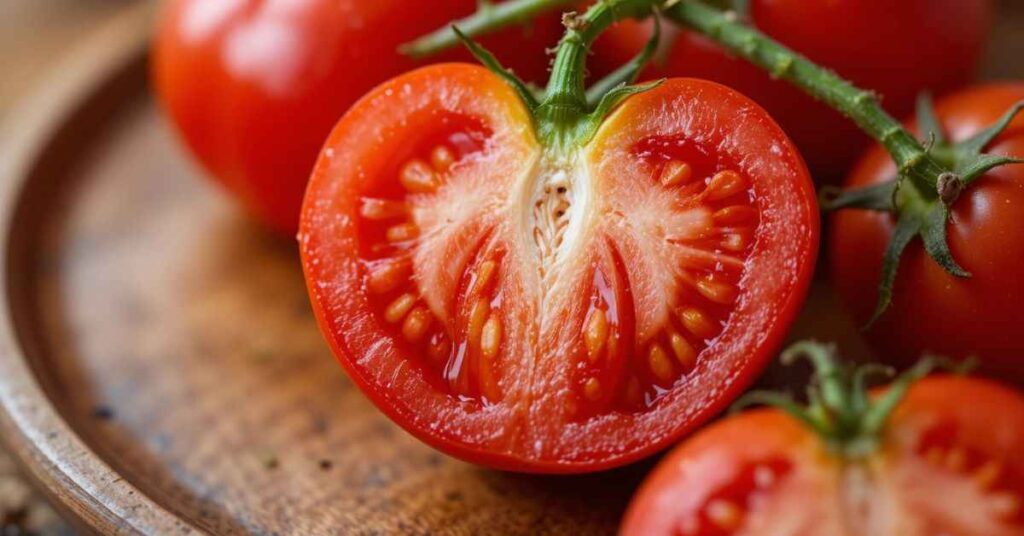
Supplies Needed to Start Tomato Seeds
To successfully grow tomatoes from seed, gather these essential supplies:
- Seed Trays or Pots : Use cell trays for individual seedlings or shallow containers.
- Seed Starting Mix : Lightweight, sterile, and well-draining. Avoid garden soil.
- Tomato Seeds : Choose high-quality seeds from reputable suppliers.
- Grow Lights or Sunny Window : Seeds need 14–16 hours of light daily.
- Heat Mat : Helps maintain consistent warmth for germination.
- Watering Can or Spray Bottle : Gentle watering is key.
- Fertilizer : Organic liquid fertilizer once seedlings develop true leaves.
- Labels and Marker : To track varieties and dates.
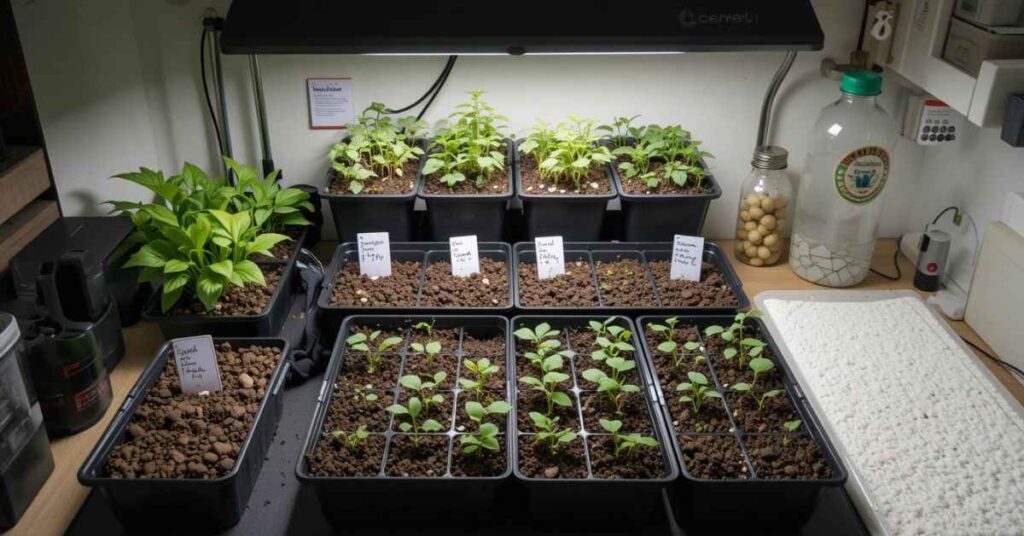
Step-by-Step Guide to Planting Tomato Seeds
Follow these steps to ensure successful germination and healthy seedlings.
Step 1: Prepare the Seed Starting Mix
Fill your seed trays or pots with moistened seed starting mix. It should feel damp but not soggy.
Step 2: Sow the Seeds
Place 2–3 seeds per cell or pot , pressing them gently into the soil. Cover with a thin layer (about 1/4 inch) of mix.
Step 3: Water Gently
Use a spray bottle or a gentle stream from a watering can to avoid displacing the seeds.
Step 4: Provide Heat and Humidity
Cover trays with a humidity dome or plastic wrap. Place on a heat mat set to 70–80°F (21–27°C).
Step 5: Monitor Daily
Check moisture levels daily. Keep the soil consistently moist but not waterlogged.
Step 6: Germination Time
Seeds usually sprout within 5–10 days depending on temperature and seed quality.
Step 7: Remove Cover Once Sprouted
Once seedlings emerge, remove the cover immediately to prevent mold and allow air circulation.
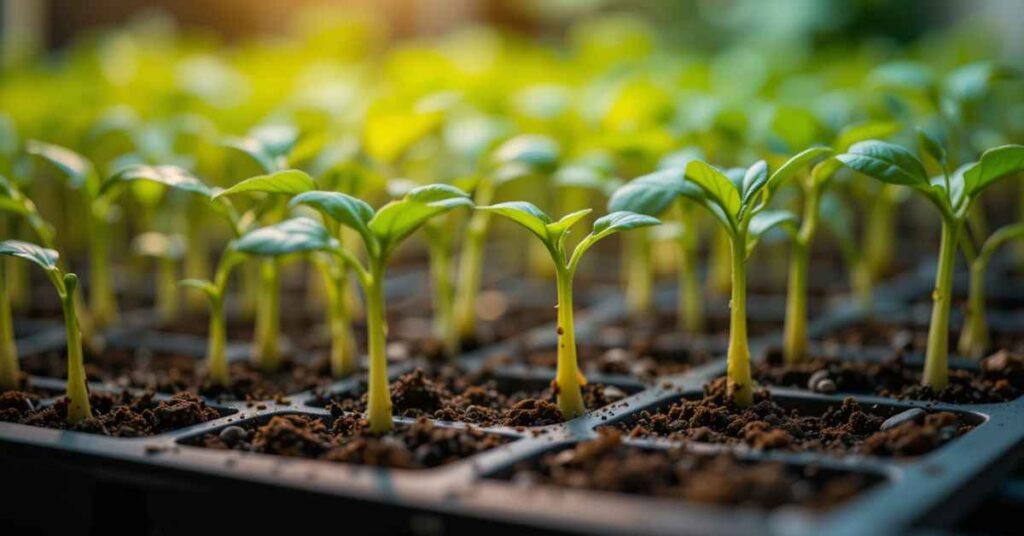
Caring for Tomato Seedlings
After germination, proper care ensures strong, healthy plants ready for outdoor transplanting.
Light Requirements
Provide 14–16 hours of bright light daily . If using natural light, rotate pots regularly. For best results, use grow lights placed 2–4 inches above seedlings.
Temperature and Air Circulation
Keep temperatures around 70–75°F (21–24°C) during the day and 60–65°F (15–18°C) at night. Use a small fan to improve airflow and prevent legginess.
Thinning Seedlings
When seedlings have two sets of true leaves , keep only the strongest plant per cell by snipping weaker ones at the base (don’t pull them out!).
Also Read: What Happens When You REGROW Veggies From the Store?
Fertilizing Seedlings
Begin feeding with a diluted organic liquid fertilizer (like fish emulsion or seaweed extract) every 7–10 days after the second set of true leaves appears.
Preventing Leggy Seedlings
Legginess occurs when seedlings stretch toward light. Prevent it by:
- Keeping lights close
- Providing adequate light duration
- Using a fan for air movement

Transplanting Tomato Seedlings Outdoors
Transplanting is a critical stage in learning how to grow tomatoes from seed. Wait until all danger of frost has passed and nighttime temperatures stay above 50°F (10°C) .
Hardening Off Your Seedlings
Before planting outdoors, gradually acclimate seedlings to outdoor conditions over 7–10 days :
- Day 1–2 : 1–2 hours in shade
- Day 3–4 : 3–4 hours in partial sun
- Day 5–6 : All day in partial sun
- Day 7+ : Full sun exposure
Bring them indoors at night during this period.
Preparing the Garden Bed
Choose a sunny spot (at least 6–8 hours of direct sunlight). Amend soil with compost or aged manure for nutrients.
Spacing Guidelines
- Bush (determinate) : 2–3 feet apart
- Vining (indeterminate) : 3–4 feet apart
- Rows : Space 4–5 feet apart
Planting Deeply
Tomatoes can be planted deeply—the buried stem will develop roots. Bury up to two-thirds of the plant for stronger root development.
Support Structures
Install stakes, cages, or trellises at planting time to avoid damaging roots later.
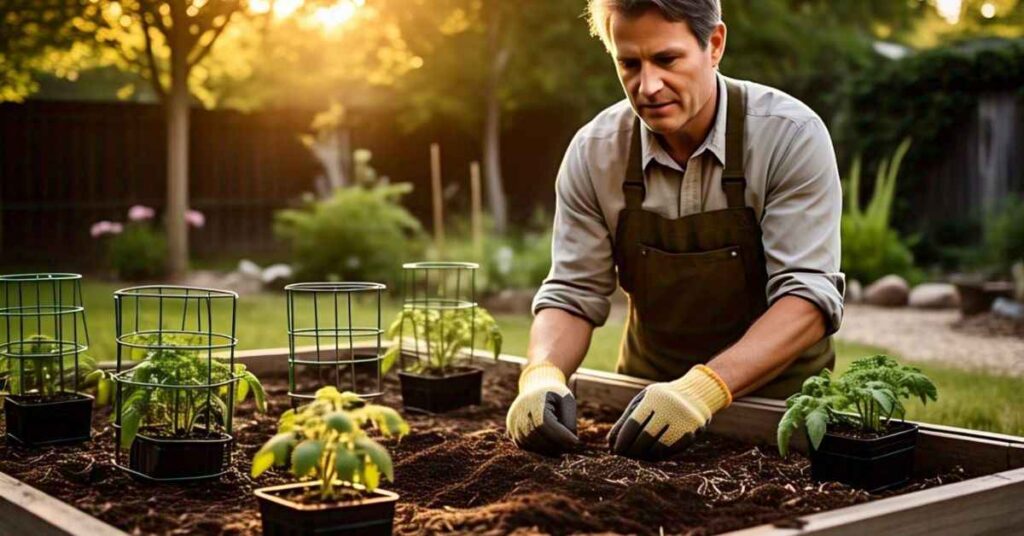
Ongoing Care and Maintenance
Once your tomato plants are established, regular maintenance is key to a bountiful harvest.
Watering Needs
Tomatoes need 1–2 inches of water weekly , preferably delivered directly to the roots. Avoid overhead watering to reduce disease risk.
Mulching
Apply 2–3 inches of mulch (straw, shredded leaves, or grass clippings) around plants to retain moisture, suppress weeds, and regulate soil temperature.
Pruning Tomato Plants
Remove suckers (small shoots between the main stem and branches) on indeterminate varieties to encourage better air circulation and fruit production.
Fertilizing Mature Plants
Feed every 2–3 weeks with a balanced organic fertilizer or compost tea. Avoid excessive nitrogen, which promotes leaf growth over fruit.
Pest and Disease Management
Common pests include aphids, tomato hornworms, and whiteflies. Diseases like blight, early blight, and blossom end rot can occur. Use organic methods like neem oil, crop rotation, and proper spacing to prevent issues.
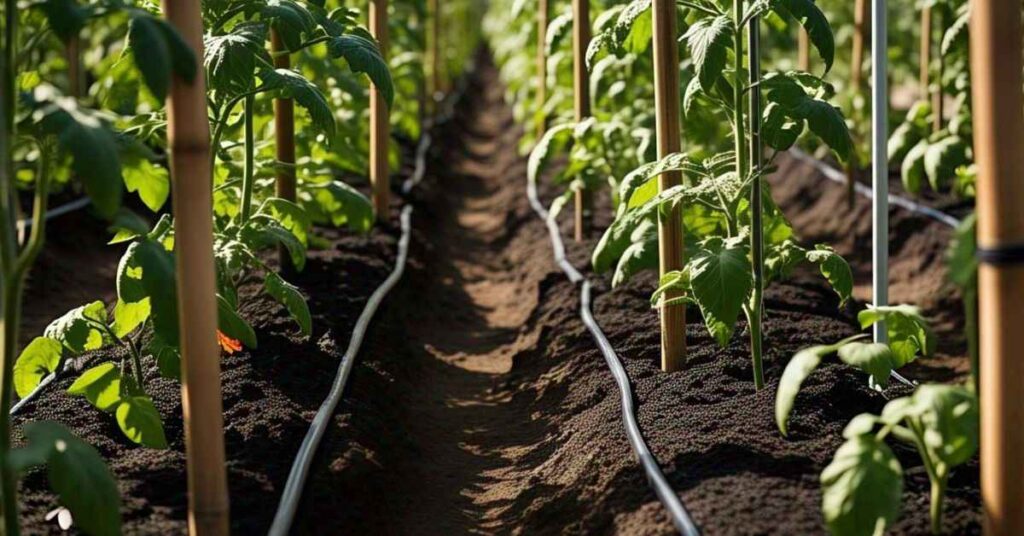
Common Problems and Solutions
Even experienced gardeners face challenges. Here are some common problems when learning how to grow tomatoes from seed—and how to fix them.
Problem: Leggy Seedlings
Cause: Insufficient light or warm temperatures
Solution: Move closer to light source, lower temperature slightly, or add supplemental lighting.
Problem: Damping Off
Cause: Overwatering, poor air circulation, or contaminated soil
Solution: Use sterile soil, avoid overcrowding, and improve airflow.
Problem: Yellow Leaves
Cause: Nutrient deficiency, overwatering, or early signs of disease
Solution: Adjust watering, apply compost tea, or remove affected leaves.
Problem: Blossom End Rot
Cause: Calcium deficiency or inconsistent watering
Solution: Add crushed eggshells or lime to soil; maintain even watering.
Problem: No Fruit Set
Cause: Lack of pollination, extreme temperatures, or nutrient imbalance
Solution: Shake plants gently, use a fan, or apply a low-nitrogen, high-phosphorus fertilizer.
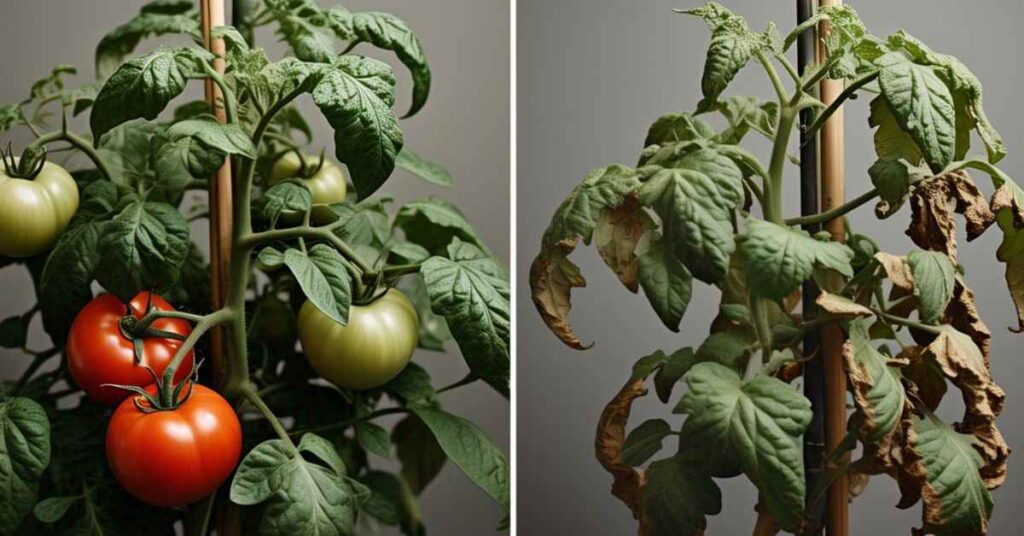
Harvesting Your Homegrown Tomatoes
Knowing when to harvest is the final step in mastering how to grow tomatoes from seed.
Signs of Ripeness
- Fully colored (red, yellow, orange, etc.)
- Firm but slightly soft to touch
- Easily detaches from the vine with a twist
Harvesting Techniques
Pick tomatoes when fully ripe for best flavor. Use clean scissors or pinch off the fruit gently to avoid damaging the plant.
Storing Fresh Tomatoes
Store at room temperature away from direct sunlight. Refrigeration can cause loss of flavor and texture.
Preserving Your Harvest
- Freeze whole or chopped
- Make sauces, salsas, or soups
- Dehydrate for tomato powder or chips
- Canning for long-term storage
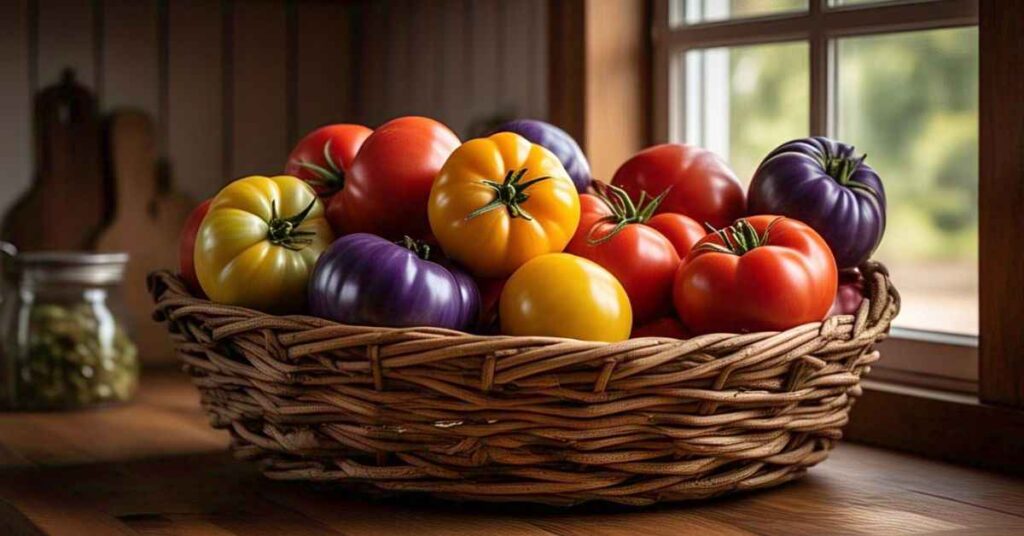
Tips for a Bountiful Tomato Harvest
To maximize your success and yield, follow these expert-approved tips:
- Start seeds indoors for an early head start.
- Rotate crops yearly to prevent soil-borne diseases.
- Companion plant with basil, marigolds, or nasturtiums to deter pests.
- Use organic mulch to conserve moisture and suppress weeds.
- Keep a garden journal to track planting dates, successes, and failures.
- Try succession planting for a longer harvest window.
- Save seeds from open-pollinated varieties for next year.
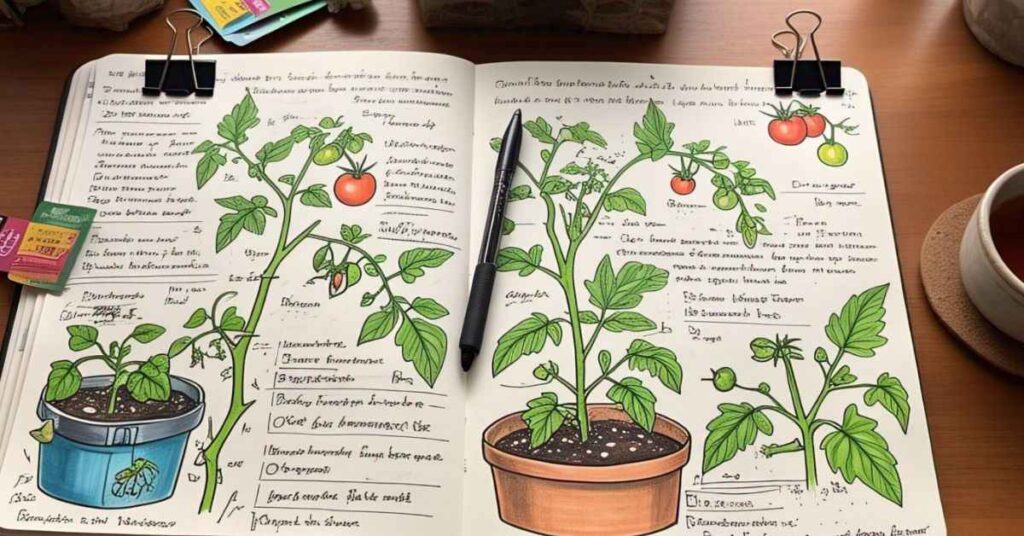
Conclusion: Start Growing Today!
Learning how to grow tomatoes from seed is a fulfilling journey that brings joy, fresh flavors, and a sense of accomplishment. Whether you’re growing in a backyard garden, raised beds, or containers on a balcony, tomatoes are versatile and accessible for any gardener.
With the right tools, timing, and care, you’ll soon enjoy the fruits of your labor—literally! So grab your seeds, prepare your soil, and get started today.
Happy Gardening! 🍅🌱
